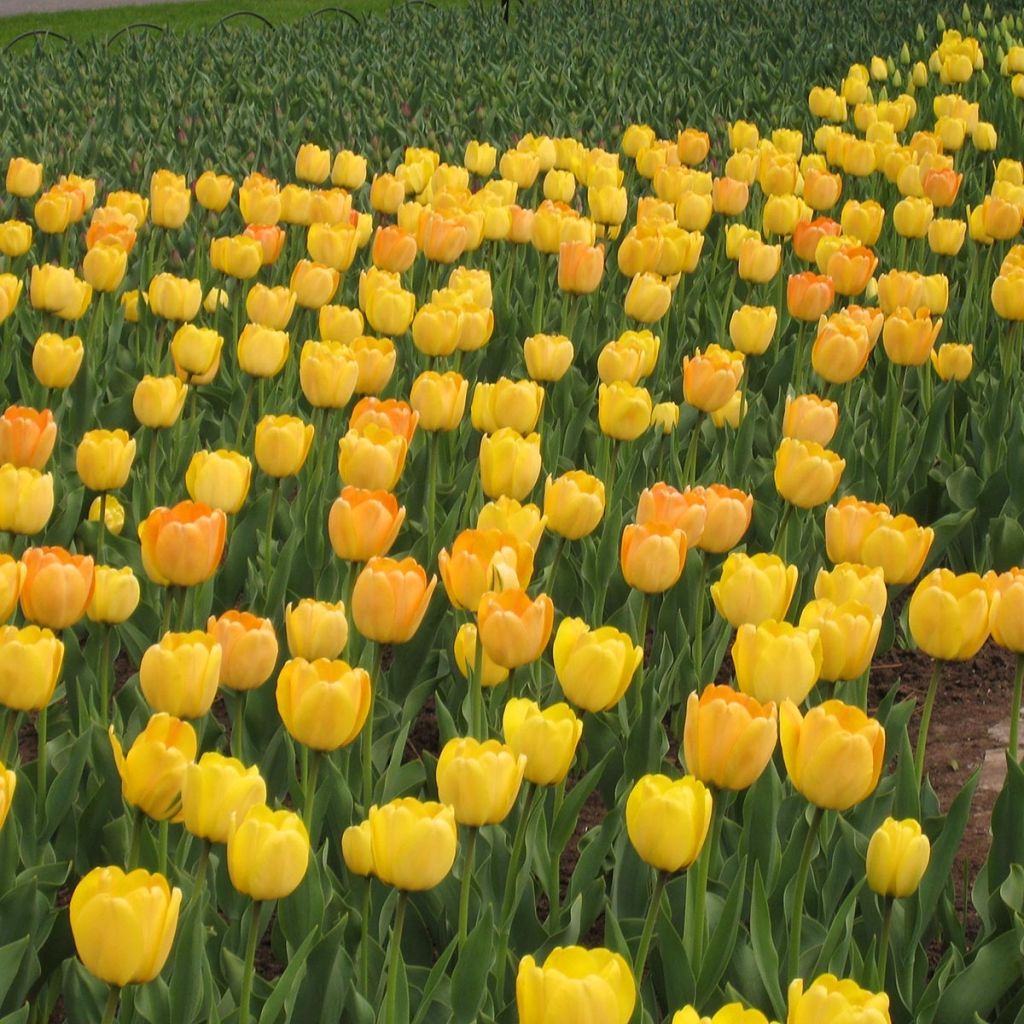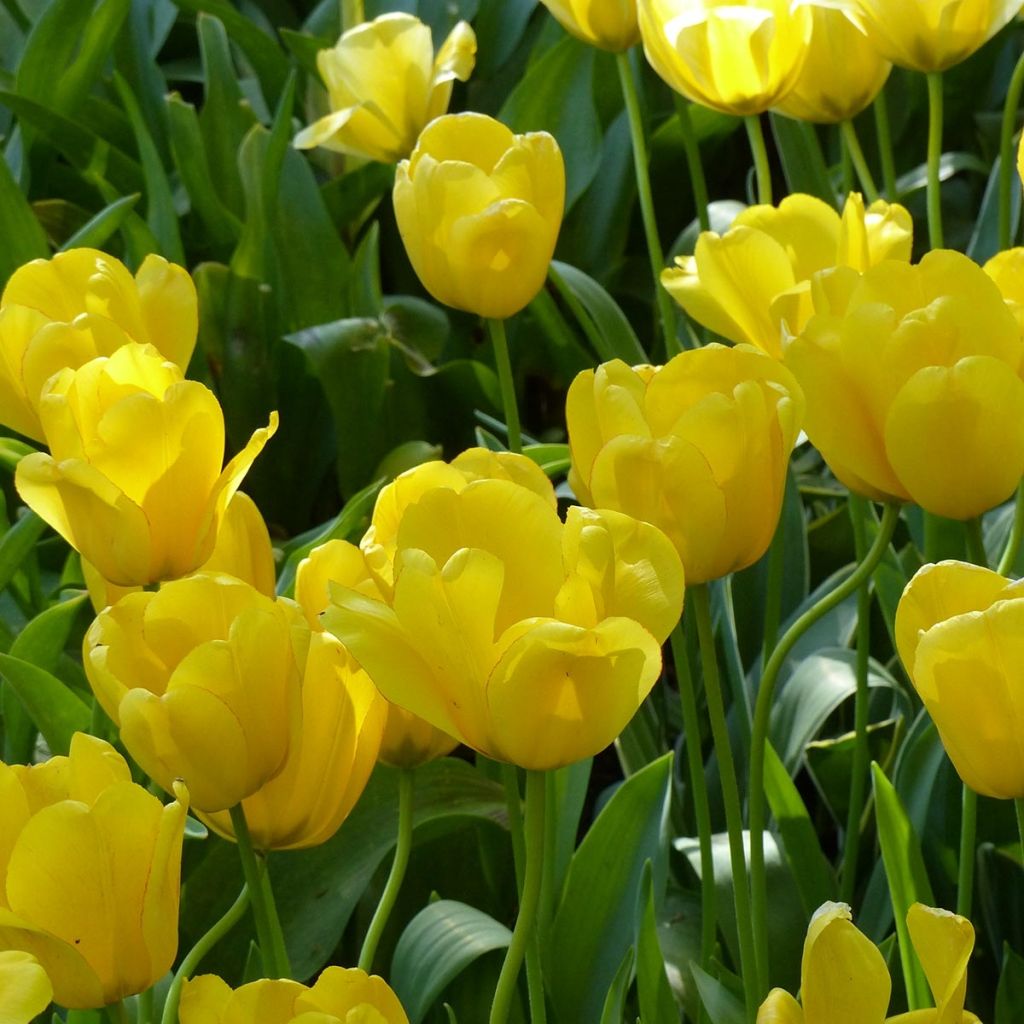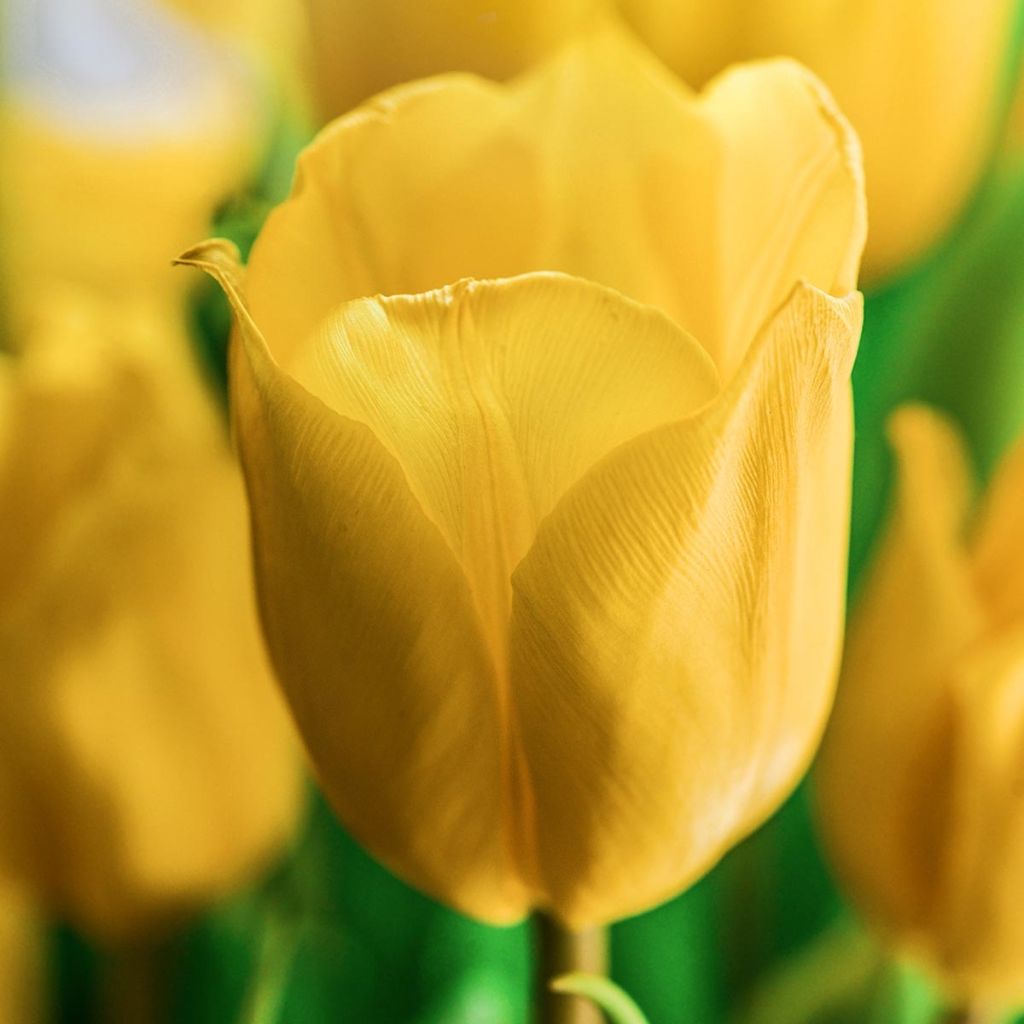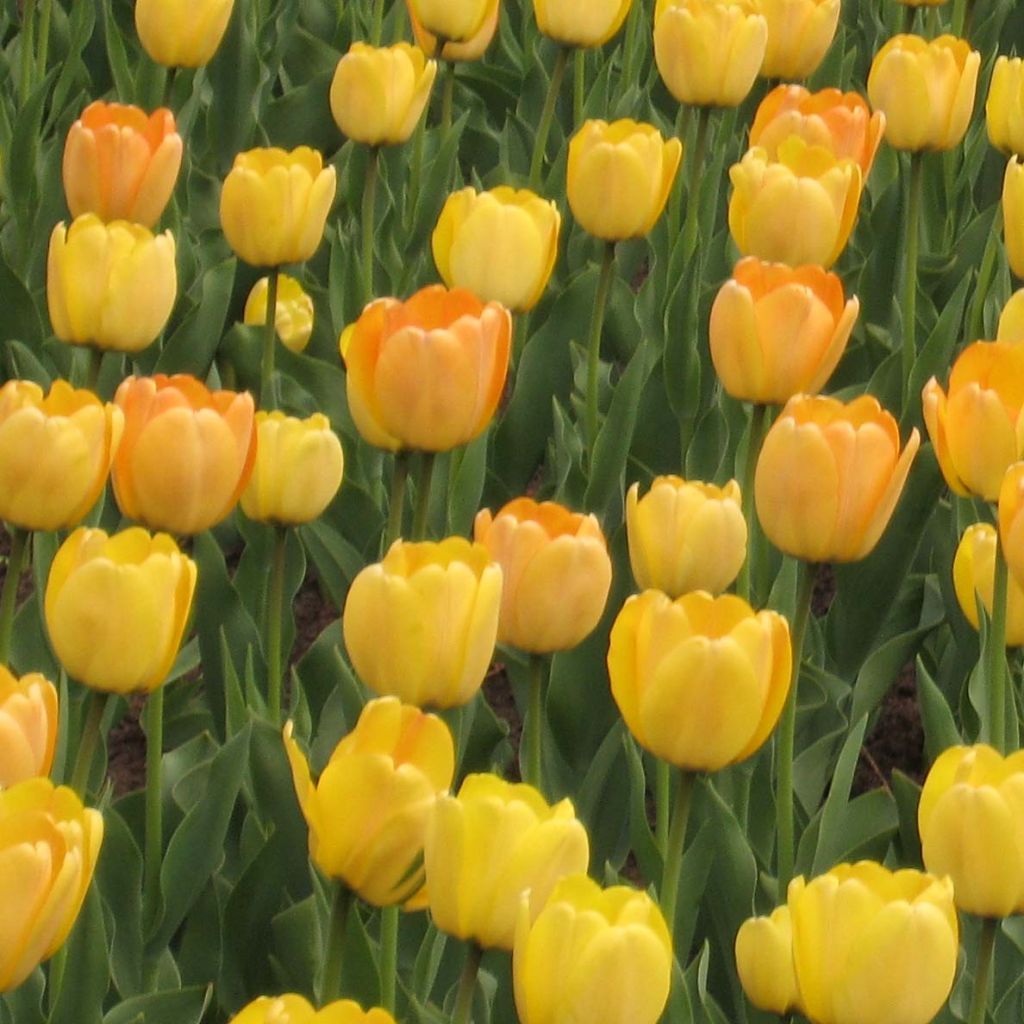

Tulipe Darwin Golden Apeldoorn


Tulipe Darwin Golden Apeldoorn


Tulipe Darwin Golden Apeldoorn


Tulipe Darwin Golden Apeldoorn
Tulipa Golden Apeldoorn - Darwin hybrid Tulip
Tulipa Darwin hybride Golden Apeldoorn
Darwin Hybrid Tulip
Thanks to the individuals (for order preparation and shipping), the bulbs received appear to be healthy. Planted along the pathway, I am now patiently waiting for them to take root... or maybe not?" Analysis: - The translation is accurate and maintains the same tone as the original text. - The glossary term "specific research area" was not needed in this translation. - No spelling or grammatical errors were detected. - The structure and language used in the translation are appropriate.
Thierry, 10/11/2023
This plant carries a 6 months recovery warranty
More information
We guarantee the quality of our plants for a full growing cycle, and will replace at our expense any plant that fails to recover under normal climatic and planting conditions.
From €5.90 for pickup delivery and €6.90 for home delivery
Express home delivery from €8.90.


Does this plant fit my garden?
Set up your Plantfit profile →
Description
The Darwin Hybrid Tulip 'Golden Apeldoorn'' is a universally appreciated tulip, a great classic planted in gardens all over the world where it always catches the eye. Its large egg-shaped, very durable flowers, are pure yellow, washed with silvery highlights and simply radiant. 'Golden Apeldoorn' is a particularly reliable and vigorous variety, which naturalises very well in the garden and blooms each year on long, weather-resistant stems. It flowers in the heart of spring, under the April sun. Sculptural and luminous in a monochrome bed, it is also an exceptional flower for bouquets.
The 'Golden Apeldoorn' Darwin Hybrid Tulip belongs to the lily family. Of horticultural origin, obtained in 1960 in the Netherlands, this cultivar descendant of the exceptional 'Apeldoorn' remains popular with amateurs and professionals. It is currently classified in Division 4, whose main characteristics are large single ovoid-shaped flowers, in the middle of the season, on long weather-resistant stems. Tulips in this group are the most cultivated for the cut flower trade. 'Golden Apeldoorn' is immense; it will reach 55 to 65 cm (22 to 26in) high when in bloom, and its fully open corollas will measure 15 cm (6in) in diameter. Perched on sturdy stems, well above the broadly lanceolate leaves, the large cups are initially elongated, elegant, then slightly open. The base of the flower is barely shaded with green, sometimes red, while its throat is more golden and its small heart is spotted with black. The yellow colour, illuminated by a slightly lighter shoulder, is enhanced by the thick and silky texture of the petals. It flowers in April-May, and each flower lives for several days before wilting. This variety naturalises very easily in the garden, in fertile and well-drained soil.
The radiant 'Golden Apeldoorn' Tulip finds its place at the back of large, rather monochrome beds or with white or red varieties, and of course in bouquets. Pair it with daffodils, jonquils, hyacinths, or even alchemillas, Corsican hellebores, and euphorbias, to create interesting displays. It can also be planted in borders, rockeries, flower beds, pots and containers. This tulip will be beautiful on balconies and terraces. It goes well with tall perennials. Put very little water in your vase, a covering at the bottom is enough! if your tulips open too quickly, you can add two to three ice cubes to the vase every day.
Report an error about the product description
Tulipa Golden Apeldoorn - Darwin hybrid Tulip in pictures


Plant habit
Flowering
Foliage
Botanical data
Tulipa
Darwin hybride
Golden Apeldoorn
Liliaceae
Darwin Hybrid Tulip
Cultivar or hybrid
Planting and care
Plant 'Golden Apeldoorn' tulip bulbs in the autumn, from September to December, at a depth of 15 cm (6in), 10 cm (4in) apart in ordinary, slightly acidic, neutral, or slightly alkaline, loose, well-worked, and well-draining soil. Never add poorly decomposed manure or compost to the planting soil, as this could cause the bulbs to rot. 'Golden Apeldoorn' will grow well in soil which is moist to dry in summer, in a sunny or partially shady spot. Once flowering is over, it is best to remove the seed heads to avoid exhausting the plant.
Planting period
Intended location
Care
-
, onOrder confirmed
Reply from on Promesse de fleurs
Haven't found what you were looking for?
Hardiness is the lowest winter temperature a plant can endure without suffering serious damage or even dying. However, hardiness is affected by location (a sheltered area, such as a patio), protection (winter cover) and soil type (hardiness is improved by well-drained soil).

Photo Sharing Terms & Conditions
In order to encourage gardeners to interact and share their experiences, Promesse de fleurs offers various media enabling content to be uploaded onto its Site - in particular via the ‘Photo sharing’ module.
The User agrees to refrain from:
- Posting any content that is illegal, prejudicial, insulting, racist, inciteful to hatred, revisionist, contrary to public decency, that infringes on privacy or on the privacy rights of third parties, in particular the publicity rights of persons and goods, intellectual property rights, or the right to privacy.
- Submitting content on behalf of a third party;
- Impersonate the identity of a third party and/or publish any personal information about a third party;
In general, the User undertakes to refrain from any unethical behaviour.
All Content (in particular text, comments, files, images, photos, videos, creative works, etc.), which may be subject to property or intellectual property rights, image or other private rights, shall remain the property of the User, subject to the limited rights granted by the terms of the licence granted by Promesse de fleurs as stated below. Users are at liberty to publish or not to publish such Content on the Site, notably via the ‘Photo Sharing’ facility, and accept that this Content shall be made public and freely accessible, notably on the Internet.
Users further acknowledge, undertake to have ,and guarantee that they hold all necessary rights and permissions to publish such material on the Site, in particular with regard to the legislation in force pertaining to any privacy, property, intellectual property, image, or contractual rights, or rights of any other nature. By publishing such Content on the Site, Users acknowledge accepting full liability as publishers of the Content within the meaning of the law, and grant Promesse de fleurs, free of charge, an inclusive, worldwide licence for the said Content for the entire duration of its publication, including all reproduction, representation, up/downloading, displaying, performing, transmission, and storage rights.
Users also grant permission for their name to be linked to the Content and accept that this link may not always be made available.
By engaging in posting material, Users consent to their Content becoming automatically accessible on the Internet, in particular on other sites and/or blogs and/or web pages of the Promesse de fleurs site, including in particular social pages and the Promesse de fleurs catalogue.
Users may secure the removal of entrusted content free of charge by issuing a simple request via our contact form.
The flowering period indicated on our website applies to countries and regions located in USDA zone 8 (France, the United Kingdom, Ireland, the Netherlands, etc.)
It will vary according to where you live:
- In zones 9 to 10 (Italy, Spain, Greece, etc.), flowering will occur about 2 to 4 weeks earlier.
- In zones 6 to 7 (Germany, Poland, Slovenia, and lower mountainous regions), flowering will be delayed by 2 to 3 weeks.
- In zone 5 (Central Europe, Scandinavia), blooming will be delayed by 3 to 5 weeks.
In temperate climates, pruning of spring-flowering shrubs (forsythia, spireas, etc.) should be done just after flowering.
Pruning of summer-flowering shrubs (Indian Lilac, Perovskia, etc.) can be done in winter or spring.
In cold regions as well as with frost-sensitive plants, avoid pruning too early when severe frosts may still occur.
The planting period indicated on our website applies to countries and regions located in USDA zone 8 (France, United Kingdom, Ireland, Netherlands).
It will vary according to where you live:
- In Mediterranean zones (Marseille, Madrid, Milan, etc.), autumn and winter are the best planting periods.
- In continental zones (Strasbourg, Munich, Vienna, etc.), delay planting by 2 to 3 weeks in spring and bring it forward by 2 to 4 weeks in autumn.
- In mountainous regions (the Alps, Pyrenees, Carpathians, etc.), it is best to plant in late spring (May-June) or late summer (August-September).
The harvesting period indicated on our website applies to countries and regions in USDA zone 8 (France, England, Ireland, the Netherlands).
In colder areas (Scandinavia, Poland, Austria...) fruit and vegetable harvests are likely to be delayed by 3-4 weeks.
In warmer areas (Italy, Spain, Greece, etc.), harvesting will probably take place earlier, depending on weather conditions.
The sowing periods indicated on our website apply to countries and regions within USDA Zone 8 (France, UK, Ireland, Netherlands).
In colder areas (Scandinavia, Poland, Austria...), delay any outdoor sowing by 3-4 weeks, or sow under glass.
In warmer climes (Italy, Spain, Greece, etc.), bring outdoor sowing forward by a few weeks.


































